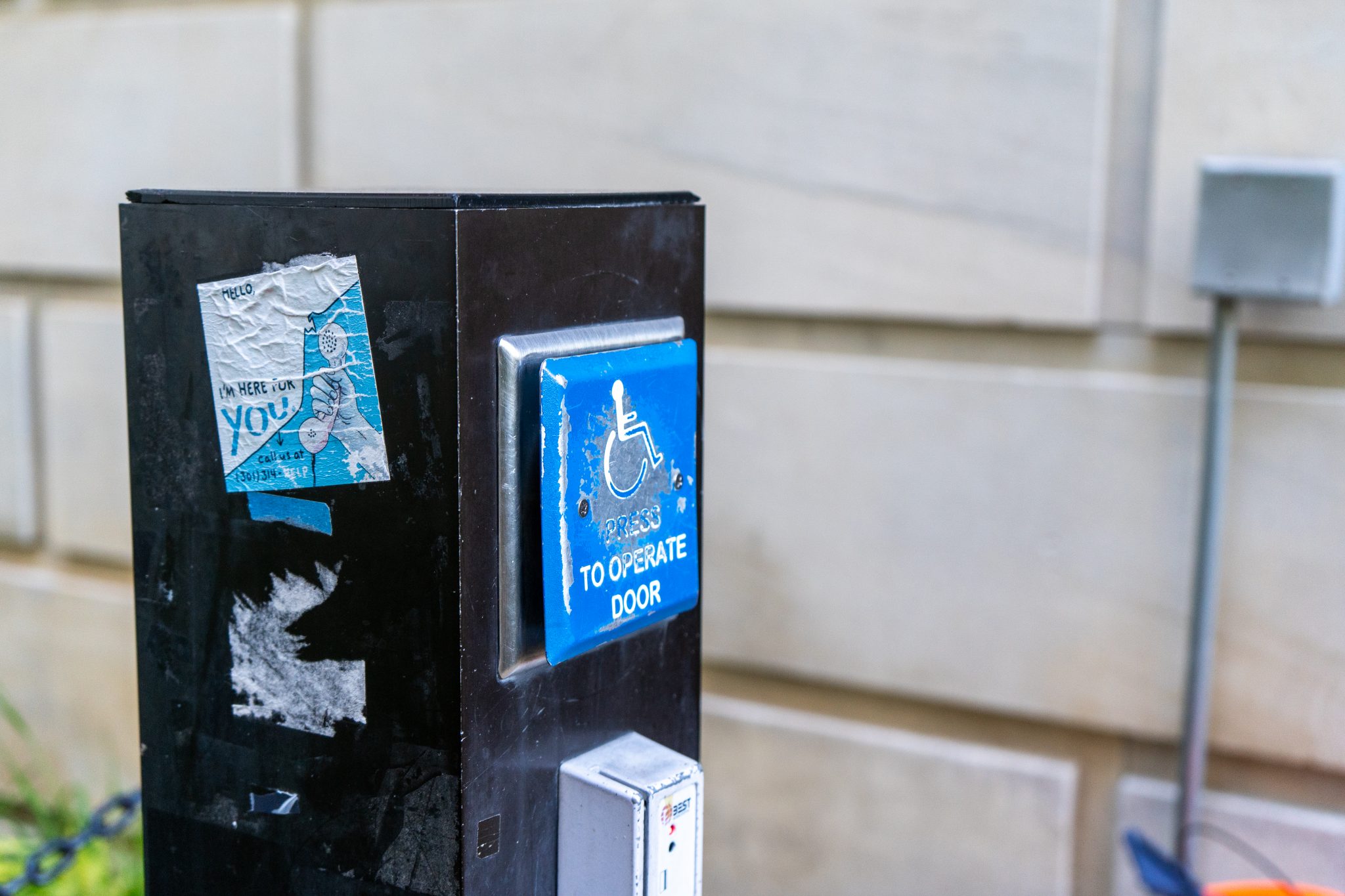Many University of Maryland students with disabilities feel the campus has become more hazardous this semester due to poor parking habits of some micromobility users.
There are currently more than 1,800 e-bikes and e-scooters registered with this university’s Department of Transportation Services. Some community members have noticed a trend of users parking micromoblity vehicles along hand railings on stairs and ramps.
The university’s Americans with Disabilities Act and 504 coordinator Emily Lucio said her biggest concern in regards to ADA on campus is scooters.
“They do pose significant challenges to people with disabilities getting around this campus,” Lucio said. “It is very frustrating to individuals with disabilities on this campus how they’re just randomly put places with no regard for anybody else.”
When scooters are parked on a ramp’s railing, they prevent wheelchair users from using the ramps, Lucio said. She added that if a scooter is parked on a stair railing, it could be hazardous to people with limited eyesight. VeoRide vehicles, which do not need to be chained to anything to lock, are often hazardously left in the middle of sidewalks, she said.
Students who ride micromobility vehicles need to be “more conscientious and more vigilant” of these problems, Lucio added.
According to DOTS bicycle and micromobility program coordinator Maddy Cirineo, the office is working on permanent metal warning signs to post near ramps.
[UMD DOTS has 1.7 active permits per available parking spot in Lot 1]
Student advocates in Disability: Identity, Culture, and Education, a student-led disability justice collective at this university, have posted handmade signs near ramps warning against parking there. The group has also collected dozens of photos depicting inappropriately parked vehicles.
Bella Grant, a member of the collective, started compiling examples of illegally parked vehicles after it became a recurring subject in the group’s discussions.
“The whole thing is just a lack of awareness,” the senior criminology and criminal justice and government and politics major said.
Grant said she has noticed this university’s BikeUMD group sending email reminders about parking rules, but she worries those messages are not reaching the right audiences.
“There’s the question of, ‘Do students even read the stuff sent out?’” Grant added.
Paisley Brockmeyer, director of the Student Government Association’s transportation and infrastructure committee, said she has received many complaints about illegally parked micromobility vehicles in ADA accessible areas.
Brockmeyer said students are either unaware that others need the ADA ramp to get to classes or don’t care.
“They don’t realize that it’s hurting someone directly,” Brockmeyer said.
A possible solution to the issue is to put up signs that emphasize parking is not allowed in certain locations explicitly because they are ADA accessible areas, Brockmeyer added.
“I think if we had signs that say ‘this is an ADA accessible area, do not park here,’ it would make that connection for people that you are not only breaking a rule, you’re harming the experience of another student campus,” she said.
In 2019, Adith Thummalapalli and other disability rights student activists, who eventually went on to form DICE, prepared a campus accessibility report that identified five key accessibility issues that needed to be addressed. All five issues have since been addressed completely.
Thummalapalli, who graduated from this university in 2020, identified five key issues with campus accessibility in the report. South Campus Commons bathrooms were inaccessible and several crosswalks were missing curb cuts, the report said.
[UMD DOTS leads bike, e-scooter tours around campus to promote safe riding practices]
Certain dorms were identified on this university’s Resident Life website as ADA compliant but were not accessible by wheelchair, the report said. The report also detailed how students at this university in wheelchairs experienced communication lapses related to elevator maintenance in campus buildings and certain student spaces, such as the bookstore, were not accessible by wheelchair.
“We said, ‘Okay, here’s the problem area. Here’s the ADA standard that has legal ramifications. Someone could sue the university over that,” Thummalapalli said.
Thummalapalli said he is currently helping DICE prepare a second report that will highlight micromobility parking with the goal of releasing it in the spring semester.
Thummalapalli emphasized that students on this university’s campus need to be more conscientious of people with disabilities.
“I would encourage students to try and see things from the eyes of someone with a disability,” Thummalapalli said. “Think about the everyday things you do, like opening a door, walking, stepping over a step or a threshold to get into a building, climbing up stairs. And really actively think about, ‘Oh, there are people out there who can’t do this. How would they get into this space?’”
Cirineo said this university recently purchased bike racks to be installed this year with parking capacity for 240 micromobility vehicles, adding to the current parking capacity of 6,000. DOTS also created a form where students can report illegally parked vehicles, Cirineo said.
CORRECTION: A previous version of this story misstated that DICE collaborated on a campus accessibility report. The accessibility report was created before DICE was founded. This story has been updated.



